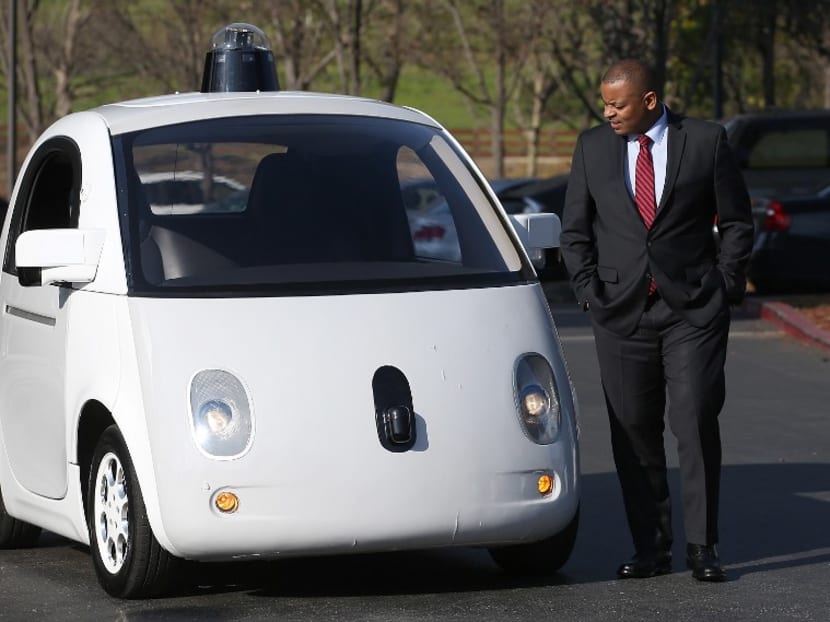Relax about robots, but worry over climate change
We need to calm down about androids. The big lesson, at policy level, is that we cannot sit and wait for innovation to save us from climate change
An oddity about the gangs of robot labourers that are supposedly about to take our jobs, leaving humanity to watch daytime TV and survive off a universal basic income, is that people who make robots for a living tend to talk them down.
Mr Junji Tsuda should know. His company, Yaskawa Electric, sells US$3 billion (S$4.03 billion) worth of robots a year to car factories. “The robot brain is developing incredibly fast. The biggest problem is the hands that do the work,” he said last year. “They’re not going to develop on an exponential curve, like computers. It’s going to be linear, steady growth.”
These android dreams reflect a mistaken belief that “technology” advances rapidly, and so any and all technological problems will find their solution in a reasonable span of time. Robots exist; technology is developing fast; therefore, robots will soon take over the world.
This logic is wrong. In fact, different technologies advance at different speeds and for different reasons, linked to the physical reality of the way they work. Misunderstanding this leads to bad economic policy, unwise investments and, not least, complacency about how to deal with climate change.
True breakthroughs — moments of wonder such as the discovery of graphene in 2004 — are impossible to predict. But the advance of existing technologies can proceed steadily enough to spawn “laws”. Moore’s Law is the most famous: The number of transistors on a computer chip, and therefore computing power, doubles every two years. There are similar rules for other technologies.
Take batteries as an example of how the pace of progress can vary. The energy stored per gram of battery has been improving by an average of 4 per cent a year for more than a century. By contrast, the number of transistors per computer chip has risen by 38 per cent a year for the past four decades or so, consistent with Moore’s Law.
The management scientist Jeffrey Funk sets out some underlying mechanisms for these advances. Certain technologies rely on developing new materials; some on steadily scaling up a device, and others on steadily reducing the size of a device. In each case there are sharply different implications for how fast the technology will advance.
Batteries belong in the first class. They look today much like they did a century ago but the material used has changed, slowly, from lead to nickel to lithium. This is a reason to question the future of electric cars and keep open the option of developing fuel cells instead.
Robots are systems rather than technologies but their physical aspects are similar to batteries in the sense that progress is not a matter of scaling. A robotic arm needs to be of a certain size. These technologies can only advance by getting better, not larger or smaller.
A second class of technologies gets better as they get bigger. The cost of a pipe depends on its radius but the amount able to pass through it depends on the radius squared, so chemical plants grow more efficient with increased scale. Passenger jets — basically big metal tubes — work the same way. Hence the 555-seat Airbus A380.
It is the world’s greatest opportunity, and its greatest threat, believes Oxford philosopher Nick Bostrom.
Wind turbines perform better at a bigger scale. Rather than struggle to build a lot of small ones on land, it may make more sense to invest in developing larger models and build them at sea.
The third class of technology — computer chips, optical data storage or the technology underlying genome sequencing, for example — improves as it gets smaller. Put simply, if you can halve the height, width and depth of an object then you can fit eight times as many of them in the same space.
Technologies linked to computing, such as artificial intelligence, have the greatest potential for rapid advance. It is easier to imagine driverless cars routinely on the roads in the near future — largely a computing challenge — than it is to imagine robots on the pavement next to them. Computers may displace a lot of drivers but it will be harder for robots to displace the postal workers.
One lesson, then, is that we need to calm down about androids. But the big lesson, at policy level, is that we cannot sit and wait for innovation to save us from climate change. Relevant technologies such as solar, wind and, especially, batteries do not have the potential for exponential advance. Rather, we need to invest in new ideas while using carbon taxes to force less efficient green technologies into use now.
Imagining new technologies — as Philip K Dick did in his 1968 novel, Do Androids Dream of Electric Sheep (filmed as Blade Runner) — is a part of inventing them. Pinning our hopes on a sudden leap in the technologies we know is more likely to deliver the post-apocalyptic world in which that story is set. Financial Times
ABOUT THE AUTHOR:
Robin Harding is the Tokyo Bureau Chief at Financial Times.







